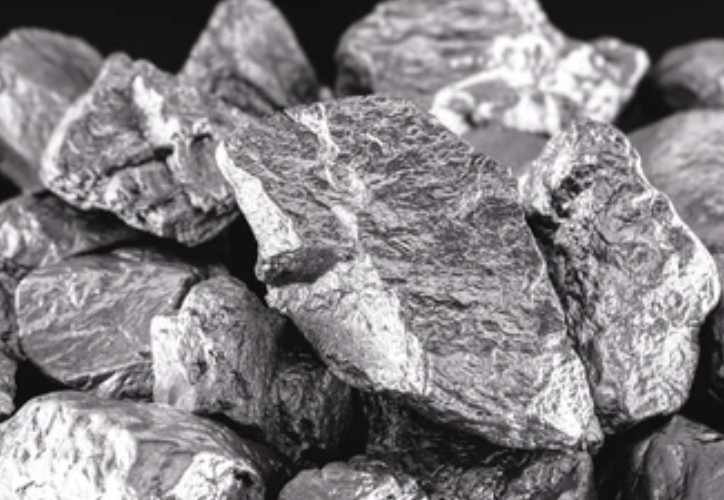
Daniel Rogers
Jul 06, 2022 14:57
Before the Russia-Ukraine War, Russia was the world's largest fertilizer supplier, and Russia and Ukraine were the world's largest and fifth-largest exporters of grain, respectively. With Russia obstructing Ukraine's direct access to waterway channels and the majority of the globe refusing to purchase Russian fertilizer, this is a perfect moment to invest in agriculture stocks.

Furthermore, because the world's top exporter of fertilizer is prohibited from selling to many nations, fertilizer prices have remained erratic. Consequently, American and Canadian fertilizer manufacturers are in an excellent position.
Similarly, food prices have increased, which has benefited several farmers. These prosperous farmers will then seek to harvest additional land and improve their equipment to increase the productivity of their farms. Both of these factors should improve the financial performance of agricultural equipment manufacturers.
Moreover, while farmers will, of course, be harmed by increased fertilizer prices, the massive demand for and high prices of their products, as well as eventual improvements in the supply of fertilizer, should enable the great majority of them to do rather well still. Let us examine the top 10 agricultural stocks in the present market.
The most important agricultural nutrients in the world are nitrogen, phosphorus, and potassium. Nitrogen is produced by synthetic chemistry, while potash and phosphate are generally extracted from the ground. Important crops like corn, soybeans, and wheat require all three nutrients. Fertilizer prices climbed in 2021 as raw material costs for nitrogen fertilizers grew and demand rose, resulting in a boom year for fertilizer manufacturers such as Nutrien. After Russia invaded Ukraine, prices for nitrogen and potash fertilizers increased even further; both nations are big fertilizer producers.
Nutrien, one of the world's major fertilizer manufacturers and the largest potash producer, is projected to produce 17 million metric tons yearly. The company's nitrogen manufacturing expenses are among the lowest in the globe. Nutrien has benefited from the commodities boom, as crop prices and cash flow margins have reached multi-year highs. In 2021, the firm posted an adjusted EBITDA record of $7.1 billion.
ScottsMiracle-Gro exposes specific consumers, including gardeners, homeowners needing lawn care goods, and farmers. During the early years of the COVID-19 pandemic, the demand for lawn and garden care increased due to stay-at-home orders and a general trend of spending more time outdoors. However, revenue has decreased in recent quarters as the economy has recovered, but it is still much higher than pre-pandemic levels, which bodes well for future expansion.
Digital agriculture was spawned by data analysis, satellite images, and mobile computing capability developments. Although this may appear to be a new possibility, tens of millions of acres have already been covered by the beginning of 2020.
Numerous farmers can now pay a monthly or annual membership fee for farm-specific historical and prospective data. How many seeds should a farmer sow in each row in the northwest corner of his or her property? When could be the best moment this season to apply fertilizer? Are there likely to be more corn rootworms than usual?
Since its inception in 1978, John Deere's stock has generated a total return of more than 10,000 percent. John Deere has emerged as a category leader, and the combination of its innovative technology and industry-leading farm equipment has led to a stock price boom.
For the foreseeable future, chemical-based pesticides and fertilizers will dominate their respective industries. However, investors should know that living technologies are also developing and may see considerable growth in the following years. Biologicals are microbe-based treatments for soils or crops to increase yields, strengthen resistance to pests, and minimize reliance on chemical inputs.
There are several methods for individual investors to obtain exposure to the developing potential. Bayer, FMC, and Corteva Agriscience are all prominent biological developers. Bayer currently owns the top biological brand on the market due to its acquisition of Monsanto and its cooperation with Novozymes.
Due to supply chain bottlenecks and resource shortages, the price of pesticides has increased. In recent years, a wave of mergers has also reshaped the business.
In 2018, Bayer purchased Monsanto to become the leading industry leader. In a series of transactions between 2018 and 2019, FMC completed the spinoff of its lithium section, sold its nutrition business, and acquired assets from DuPont to become one of the world's largest agrochemical firms. In 2019, DuPont and Dow Chemical amalgamated and subsequently separated into three different firms, one of which is Corteva Agriscience.
However, litigation and regulation continue to be threats in the business. In February of 2021, Bayer put aside $2 billion to cover any more Roundup-related cancer claims. Corteva may face legal action for its chlorpyrifos herbicide, which the EPA will prohibit in 2021. In California, a class-action lawsuit was brought against the business over the pesticide's relation to childhood brain damage. Additionally, agricultural organizations have sued the EPA over the prohibition.
Increased interest in plant-based meat products results from the increased need for animal-free proteins. To thrive, consumer brands such as Beyond Meat (NASDAQ: BYND) and Impossible Foods must deliver on nutrition, flavor, texture, and pricing. Creating alliances and supply agreements with major agribusiness corporations, such as Archer-Daniels-Midland, Bunge, and Tyson Foods may be advantageous for enterprises specializing in plant-based meats.
A few atypical stocks are also worth your attention. Precision BioSciences (NASDAQ: DTIL) is developing a unique gene-editing technology platform focusing on human health, and it also has a subsidiary that focuses on agricultural applications. One goal is to develop neutral-tasting, high-protein chickpeas, which might become a plant-based protein source for the next generation. Beyond Meat uses yellow pea protein in its products, but if the Precision product lives up to the expectations, it may be tempted to convert at least some of its source to chickpeas.
Vertical farming is the most recent agricultural innovation to dominate the market. Investors are placing large wagers on stocks like AppHarvest and Local Bounty (NYSE: LOCAL), a vertical farming and hydroponics hybrid. Vertical farming reduces the need for land and water by using shelves and artificial lighting to cultivate crops. Vertical farming offers the ability to construct facilities that are considerably closer to customers while conserving space.
The Kentucky-based startup AppHarvest asserts that it delivers vegetables to people within a day's drive of its facilities. Compared to traditional products, which are sometimes imported from outside or delivered from California, the accessibility to markets is advantageous.
The 60-acre flagship site of AppHarvest is among the largest indoor farms in the world and acts as a model for the company. The firm is now focused on tomato production, but it has ambitious development ambitions and expects to generate at least $350 million in sales by 2025 with good profit margins.
Nutrien, with a market valuation of around $50 billion, is one of the largest agricultural firms in the world. While several diverse chemical businesses produce fertilizer or pesticides, NTR focuses solely on agricultural supplies and financial solutions for farmers who use these materials.
Its product portfolio consists of potash, nitrogen, phosphate, and sulfate products, as well as seeds and other farming goods sold at about 2,000 retail locations worldwide. NTR conducts business in the United States, Canada, South America, and Australia.
Nutrien, an agricultural stock founded in 2018 after merging two smaller specialized chemicals firms, controls its market niche and has a size that makes it difficult for competitors to compete. In this risk-averse market, it is no surprise that NTR stock has risen more than 10 percent in 2022 as of June 17 due to the company's dependable operations and ongoing upside throughout the commodity supercycle's support for agricultural farmers.
Bunge, one of the world's leading agricultural processors, is involved in every aspect of the food value chain. The firm first acquires grains, oilseeds, and other products directly from farmers. The logistics division then stores and transfers these agricultural goods around the globe. Through milling, crushing, and refining operations, the company, transforms the crops into materials more suitable for end consumers and commercial entities. The company then packages and sells these products to companies and individuals.
Founded in Amsterdam more than two centuries ago, Bunge's current headquarters are located in St. Louis. It has also maintained unbroken dividend payments to stockholders for 20 years, weathering the 2008 financial crisis and the recent pandemic-related interruptions.
BG is not performing as well as some of the other investments on this list, with "just" 5% year-to-date gains in 2022. However, it is a highly stable solution because of its front-to-back agricultural business strategy, extensive partnerships, and global scale. In addition, BG stock currently yields around 2.5% above share price returns.
ADM, another agribusiness behemoth, is a worldwide agricultural processor that produces plant-based ingredients for consumer products, animal feed, and industrial solutions. This roughly $50 billion behemoth, headquartered in Chicago, acquires, transports, stores, processes, and sells commodities worldwide, including Europe and South America.
ADM is enjoying a phenomenal year, with predicted sales growth of 12 percent over the previous fiscal year. As a result, shares are up 14 percent for the year through June 17, despite Wall Street's overall decline.
ADM may have a place in long-term dividend portfolios in addition to its existing position as a beneficiary of rising commodity prices. Historically, agriculture has had slower development than other high-growing industries, such as cloud computing and consumer technology. However, agriculture is a recession-proof industry. Archer-Daniels-Midland is an agribusiness firm with a history of prioritizing shareholders. Its 2.0% yield and distributions have increased by about 1300% in ten years, from 17.5 cents per share at the end of 2012 to 40 cents per share weekly today.
Before the Ukraine-Russia War, the United States was the second-largest wheat exporter in the world, after Russia. With the majority of the globe refusing to purchase wheat from Russia, American wheat producers will be able to sell far more grain at significantly better prices than in the past.
Indeed, in April, Peter Zeihan, a geopolitical strategist, told American farmers, "This is your moment." The world's "first and fourth-largest wheat producers" are walled off from the rest of the globe, while "one-third of the world's farmers cannot afford fertilizer."
Deere (NYSE: DE), "the world's largest farm machinery manufacturer in 2021," is well-positioned to profit from the success of wheat producers in the United States and other Western nations.
Indeed, the business posted fiscal second-quarter earnings above expectations on May 20, anticipating generating between $7 billion and $7.4 billion in net profits for the fiscal year.
Corteva, unlike several of the names preceding it on this list, is an agriculture stock that some may not recognize. This is because this company was established in 2019 due to the Dow-DuPont merger. Consequently, while the Corteva brand is relatively young, the underlying company has existed for some time. Before the separation, the company that would become Corteva generated around $14 billion in annual revenue.
Due to the success of its seed and herbicide operations, Corteva's revenue should approach $18 billion in the coming year. CTVA's branded seeds employ "trait technologies" that use bioengineering to improve resistance to weather, disease, insects, and herbicides, "crop protection" products may be sprayed liberally without harming production.
Farmers throughout the United States, Canada, Latin America, the Asia-Pacific, Europe, the Middle East, and Africa are served by Corteva. This extensive reach and excellent customer relationships have offered stability in an otherwise challenging market environment, with shares of this agricultural stock up almost 13 percent year to date when other stocks are in the negative.
In a column about CNH Industrial (NYSE: CNHI) stock, an additional sizeable agricultural machinery manufacturer, Seeking Alpha contributor Luca Socci noted that the company is well-positioned to benefit from the solid global trends of rising populations, a lack of farmable land, and a shortage of farm labor. These current improvements are expected to encourage farmers to boost their production by utilizing additional machinery.
According to the GIS, several nations, including India, the United States, Brazil, and Argentina, have increased exports in response to rising commodity prices.
Given CNH's strong presence in North and South America (one of the top three agricultural machinery manufacturers on both continents), the firm is well-positioned to profit from expanding agricultural exports in both the United States and Latin America.
Regarding ETFs, MOO is an essential holding for any portfolio seeking diverse exposure to agricultural industries. With the founding year of 2007 and about $2 billion in AUM, the VanEck Agribusiness ETF is a popular choice among investors. Moreover, with a brilliant ticker symbol, it is not easy to forget once the details are learned.
This ETF aims to invest in businesses that generate most of their income from agricultural-related chemicals, animal health products, irrigation equipment, farm machinery, and similar things. Currently, the portfolio consists of around 55 stocks, and its top holdings include Bayer AG (BAYRY), Deere & Company (DE), and Zoetis Inc., a supplier of animal and cattle health services (ZTS).
Although MOO is slightly in the red for the year so far, its broad emphasis on the agriculture sector has enabled it to weather Wall Street's turbulence better than most other funds. In addition, the exchange-traded fund now yields roughly 1.3%, slightly less than the typical S&P large-cap stock.
Tyson Foods is a food firm that manufactures a variety of frozen and refrigerated beef, hog, and chicken products, among others. Breeding stock, contract farmers, feed production, processing, marketing, and transportation are among the company's businesses. On February 11, Tyson announced a quarterly dividend of $0.46 per Class A and $0.414 per Class B share. Both dividends will be paid on June 15 to shareholders of record on June 1, 2022.
Despite being a very specialized fund, WEAT enables investors to obtain exposure to the price of wheat futures in a brokerage account without diversification into other agricultural commodities.
Currently, the fund is primarily invested in wheat futures with expiration dates in September 2022, December 2022, and December 2023. This affords you sufficient time to avoid short-term price volatility while participating in the medium-term uptrend in agricultural commodities.
So why wheat as opposed to the other grains available? The wheat futures complex is one of the most liquid in the world, and the WEAT ETF is one of the most significant single-good ag funds with more than $600 million in assets under management. In addition, the commodity is in great demand throughout the world economy for use in food and animal feed, as well as in specialized uses like particleboard manufacture and plastics.
Moreover, given that this agriculture ETF is up more than 40 percent year-to-date, there is undeniable momentum here that makes wheat an attractive pick.
Consider this Invesco fund with more than $2 billion in AUM if you want diversified exposure to agricultural commodities instead of the publicly traded firms that support the industry. DBA attempts to monitor changes in an index composed of the most actively traded agricultural commodities futures. Wheat, corn, soybeans, and sugar occupy the leading positions.
As a result of inflationary pressures, commodity futures have gained popularity over the past year or two. However, many investors may be unfamiliar with the futures market or unwilling to investigate various contracts or expirations. DBA is not precisely inexpensive, with an expense ratio of 0.93 percent annually, or $93 per year on every $10,000 invested. However, it removes some of the costly guesswork from this asset class because it can be traded in a conventional brokerage account without incurring the per-contract fees of ag futures.
Due to these future contracts, DBA is formed as a limited partnership, meaning that stockholders do not pay federal income taxes at the fund level but must deal with a complex K-1 tax form when the fund passes down yearly profits and returns.
Nevertheless, you cannot disagree with the 2022 performance of this farm fund, which is up more than 10 percent year-to-date as of June 17, while large-cap stocks have moved in the other direction.
Bank of America has recommended Mosaic (NYSE: MOS), a fertilizer manufacturer, as one of three companies in the industry whose stocks should be purchased.
Bank of America anticipates that China will extend its ban on fertilizer manufacturers beyond the end of this year, and the business believes this would help Mosaic and its competitors. The price objective of Bank of America is $85 per share of MOS stock.
Mosaic's first-quarter earnings, released on May 2, fell just short of the average analyst forecast. However, its sales increased by 74 percent year-over-year to $3.92 billion, and its EBITDA, excluding certain things, more than doubled to $1.45 billion. In contrast, its gross margin per ton of fertilizer increased by more than fourfold to $323.
MOS stock provides investors with a 1% dividend, and the shares are trading at an absurdly low forward price-to-earnings ratio of 3.9.
Several sectors of the agricultural business are represented by the stocks listed above. Investing in a portfolio of these firms might provide inflation protection. In the near term, volatility exists. However, the long-term trend for the firms' stocks is upward.

Jul 05, 2022 17:37

Jul 06, 2022 16:35